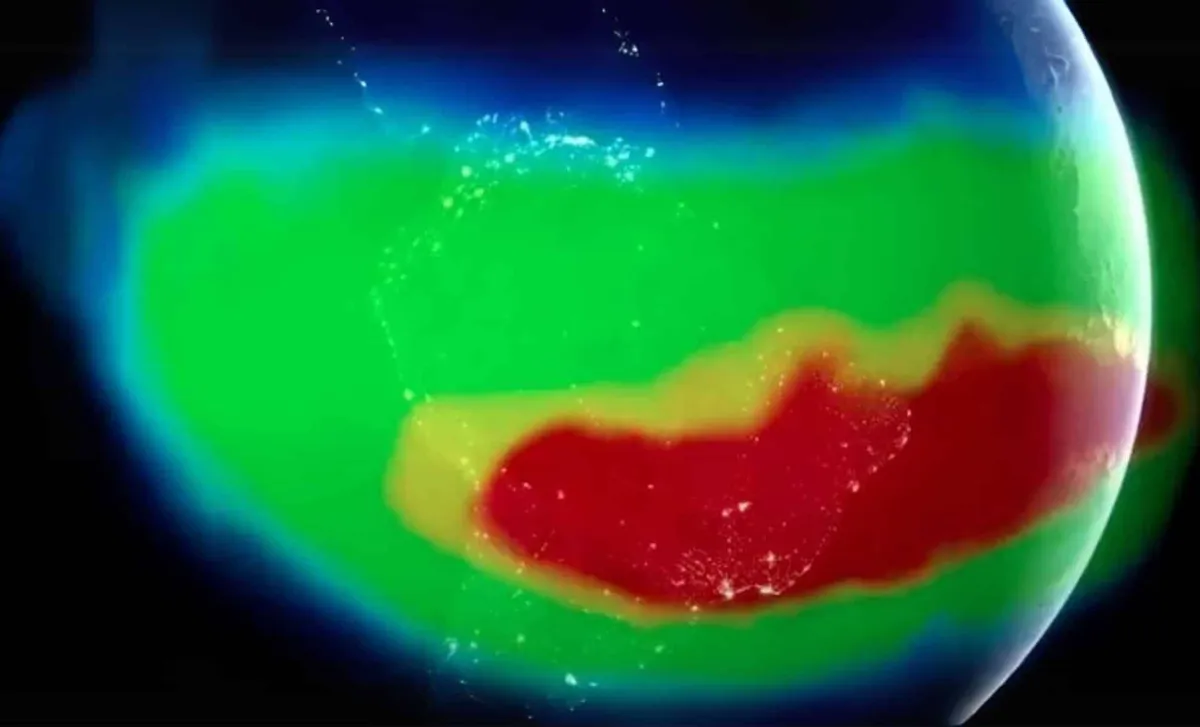
The South Atlantic Anomaly (SAA) is a significant and evolving region in Earth's magnetic field, located above South America and the southern Atlantic Ocean. This anomaly has garnered the focused attention of NASA researchers due to its unique characteristics, including a marked reduction in magnetic intensity. This weakened magnetic field allows high-energy solar particles to approach closer to Earth than usual, raising concerns about the effects on both satellites and space missions.
The origins of the SAA trace back to deep within the Earth's interior, where the outer core, made of molten iron and nickel, drives a dynamic process known as the geodynamo. This process generates Earth's magnetic field, but not in a uniform manner. The tilt of Earth's magnetic axis, combined with the influence of a dense subterranean structure called the African Large Low Shear Velocity Province, which lies nearly 2,900 kilometers beneath the African continent, creates disturbances in the generation of the magnetic field.
These irregularities result in a region of weak magnetic intensity over the South Atlantic. NASA geophysicists indicate that the anomaly is also associated with a local reversal of magnetic polarity, which further diminishes the overall dipole field strength. According to Weijia Kuang from NASA’s Goddard Space Flight Center, a reversed-polarity field is expanding in the area, decreasing the intensity below that of the surrounding regions. Consequently, this anomaly compromises Earth's magnetic shielding, creating a "pothole" in the planet's magnetic armor.
The weakened magnetic field in the SAA allows charged solar particles to penetrate deeper into the near-Earth environment. Satellites traversing this region encounter elevated levels of high-energy protons, which can lead to what engineers refer to as single event upsets (SEUs). These interactions may result in temporary malfunctions, data corruption, or even permanent damage to critical systems. To mitigate these risks, many spacecraft operators routinely shut down non-essential systems when crossing the anomaly.
NASA missions, including the International Space Station (ISS), are not exempt from these effects. The ISS orbits through the SAA on every pass. While the station's shielding protects astronauts, external instruments such as the Global Ecosystem Dynamics Investigation (GEDI) are more susceptible to damage. GEDI's deputy principal investigator, Bryan Blair, reports that the instrument occasionally experiences data “blips” and resets, although the overall impact remains manageable, with only a few hours of data loss each month.
Recent satellite data, including measurements from ESA’s Swarm constellation and historical data from NASA’s SAMPEX mission, have confirmed that the SAA is not static. Instead, it is slowly drifting northwest, expanding, and splitting into two separate zones of minimum magnetic intensity. This bifurcation was first identified in 2020 and has been supported by studies involving CubeSats and other orbital instruments. The emergence of two distinct magnetic lobes within the anomaly increases the number of danger zones for satellites and complicates the development of models used to forecast geomagnetic conditions.
As NASA’s Terry Sabaka explains, understanding the shifting morphology of the SAA is crucial for ensuring the safety of both satellites and future space missions. This ongoing evolution highlights the need for continuous monitoring and research.
The weakening of Earth's magnetic field in the SAA region has broader implications for interactions between the planet and solar activity. Typically, Earth’s magnetosphere deflects most solar wind particles and confines some within the Van Allen radiation belts, particularly in a toroidal region that starts about 400 miles above the surface. However, in the SAA, this protective function is compromised. During periods of heightened solar activity, such as coronal mass ejections (CMEs), more particles are injected into Earth's near-space environment. These events can deform the magnetic field, allowing radiation to penetrate more deeply.
Studies show that the SAA region, due to its weakened shielding, is particularly vulnerable to such solar events. NASA heliophysicists, including Ashley Greeley and Shri Kanekal, emphasize the importance of studying how solar particles behave within the anomaly. Data from SAMPEX spanning two decades has enabled scientists to measure particle flux and confirm that solar radiation levels are elevated inside the SAA, information critical for developing resilient satellite systems designed to endure extreme conditions.
To better understand and predict changes in the magnetic field, NASA combines data from various orbiting missions with core dynamics simulations. This information allows teams at Goddard to contribute to global models, such as the International Geomagnetic Reference Field (IGRF), which tracks the evolution of Earth’s magnetic environment. These models are essential not only for satellite planning but also for understanding Earth’s internal structure.
Nasa’s forecasting approach resembles weather prediction but is adapted for much longer time scales. By integrating both observational data and physics-based models of core motion, scientists like Andrew Tangborn can generate forward-looking estimates of secular variation—the slow but persistent changes in Earth’s magnetic field over years and decades.
While the current expansion and splitting of the SAA may seem unprecedented in the satellite era, geological evidence indicates that such phenomena are not unusual over longer timescales. A 2020 study suggests that similar anomalies may have existed as far back as 11 million years ago. This reinforces the notion that the SAA does not signify an imminent magnetic pole reversal, a rare but natural process that occurs over hundreds of thousands of years.
As researchers continue to monitor the South Atlantic Anomaly, understanding its dynamics becomes increasingly vital for safeguarding both current and future space operations.